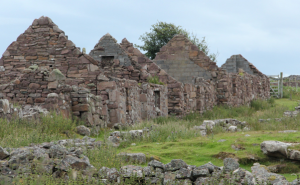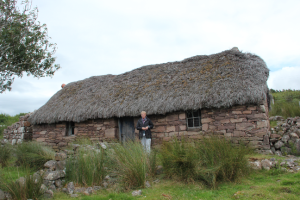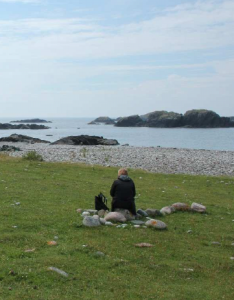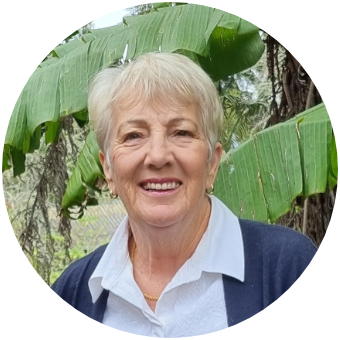Nostalgia - Familiar Places
This is the Sixth in a series of posts written in early 2025.
Jacob left Beer-sheba and went towards Haran. He came to a certain place and stayed there for the night, because the sun had set. Taking one of the stones of the place, he put it under his head and lay down in that place. And he dreamed that there was a stairway set up on the earth, the top of it reaching to heaven, and the angels of God were ascending and descending on it… Then Jacob woke from his sleep and said, ‘Surely the Lord is in this place—and I did not know it!’
I wonder what spots have been for you a place of experiencing the presence of God? At a Lenten retreat for our local Presbytery, a clergy couple who had recently completed an overseas Study Leave spoke to us about Pilgrimage. It was engaging, and too rich to cover in a single post; I am keen to use the theme for a whole series later this year. But it did get me thinking about the familiar places that we visit often, even if just in the imagination.
 For me that would be my grandfather’s 1855 birthplace in the Western Highlands of Scotland. John McLeay left there to go to sea, and many years later ended up farming in the Rangitikei area of New Zealand. The ‘Black House’ where he was born is still there, in a row of five stone houses in Lonbain, north of Applecross in Rossshire. In 1982, one of the end houses was restored and used in a movie “Ill Fares the Land” about the evacuation of the Hebridean Island of St Kilda in 1930. Family members imagine him growing up in that two-room dwelling, with no attic or cellar. Lonbain had once been a thriving community but lack of a road and poor economic opportunities led to the population drifting away. The row of houses can still be seen when driving along the Applecross coast road.
For me that would be my grandfather’s 1855 birthplace in the Western Highlands of Scotland. John McLeay left there to go to sea, and many years later ended up farming in the Rangitikei area of New Zealand. The ‘Black House’ where he was born is still there, in a row of five stone houses in Lonbain, north of Applecross in Rossshire. In 1982, one of the end houses was restored and used in a movie “Ill Fares the Land” about the evacuation of the Hebridean Island of St Kilda in 1930. Family members imagine him growing up in that two-room dwelling, with no attic or cellar. Lonbain had once been a thriving community but lack of a road and poor economic opportunities led to the population drifting away. The row of houses can still be seen when driving along the Applecross coast road.
 I’ve only visited once, but it was a deeply meaningful occasion, on our second visit to Scotland. The first time we had four school-age children in the car, so I had been advised by my Dad not to try and visit, as the rough road would have made the kids sick. So my later visit in 2013, when we visited Scotland as a couple, is my only time up there. We made the most of our three days, driving between the small hamlets, whose names are all oft-used in the family, and walking over the moors and down to bays like Sand, the location of the TV series Monty Hall’s Great Escape (2009). We also spent time in small churches, and in the well-resourced Heritage Centre, at the time staffed by distant cousin Duncan.
I’ve only visited once, but it was a deeply meaningful occasion, on our second visit to Scotland. The first time we had four school-age children in the car, so I had been advised by my Dad not to try and visit, as the rough road would have made the kids sick. So my later visit in 2013, when we visited Scotland as a couple, is my only time up there. We made the most of our three days, driving between the small hamlets, whose names are all oft-used in the family, and walking over the moors and down to bays like Sand, the location of the TV series Monty Hall’s Great Escape (2009). We also spent time in small churches, and in the well-resourced Heritage Centre, at the time staffed by distant cousin Duncan.
That’s a good example of a familiar place which is visited more in the imagination than in reality. But all of us will have memorable places to which we literally return again and again. The family farm or the mudbrick cottage mentioned in earlier posts, the church where our kids got married, or the place where we got engaged when Ric returned from three months overseas (it was an island in the middle of a sewage farm adjacent to Auckland airport!). One special place for me is a beach near our home, where I wandered during a period of sadness occasioned by a difficult decision. That day, as I looked at rough waves and seaweed-strewn sand, I sensed the Lord pointing me to the unseen life under the stormy seas. He reminded me of my marine ecology studies at university, and of the fact that he was constantly at work under the sea, protecting fish and flora, feeding, growing and multiplying them despite the storms above. Some years later I made a sympathy card for friends who had suffered the loss of their adult son in a drowning tragedy; I wrote a poem that expressed my heartfelt agony for them but reminding them of the sovereignty of God over even the stormy rivers and seas we face. (I kept a copy but can’t find it now; maybe one of the boxes labelled “memoir” will reveal it at the right time!)
 From Celtic Christian spirituality we inherit the idea of ‘thin places’, where God seems especially close, and the gap between heaven and earth seems narrow. The photo shows me at such a place, St Columba’s Bay on the island of Iona. Many of us will have shared something of Jacob’s experience at Bethel, encountering God in a particular place which then takes on a new resonance. The Bible tells us that Jacob had a lasting limp, but he also took the stone he had slept on to build a cairn, a physical memorial of his lifechanging encounter with God. Some of our experiences have been transformational, but have left no physical mark. I have found that journalling about those experiences is sufficient to ‘ground’ them. Others might take away a more tangible souvenir, such as a stone from St Columba Bay, or some water from the Jordan. For years I kept at home a parched branch that had represented the state of my own soul in a dry period. It didn’t make the cut when we moved house, but I will find another!
From Celtic Christian spirituality we inherit the idea of ‘thin places’, where God seems especially close, and the gap between heaven and earth seems narrow. The photo shows me at such a place, St Columba’s Bay on the island of Iona. Many of us will have shared something of Jacob’s experience at Bethel, encountering God in a particular place which then takes on a new resonance. The Bible tells us that Jacob had a lasting limp, but he also took the stone he had slept on to build a cairn, a physical memorial of his lifechanging encounter with God. Some of our experiences have been transformational, but have left no physical mark. I have found that journalling about those experiences is sufficient to ‘ground’ them. Others might take away a more tangible souvenir, such as a stone from St Columba Bay, or some water from the Jordan. For years I kept at home a parched branch that had represented the state of my own soul in a dry period. It didn’t make the cut when we moved house, but I will find another!
Do you have a particular place which is special for you or important in your relationship with God? Why is it important? If you haven’t visited it for a while, why not make the effort to revisit, or take some time to think about the practicalities of prioritising a visit soon?

